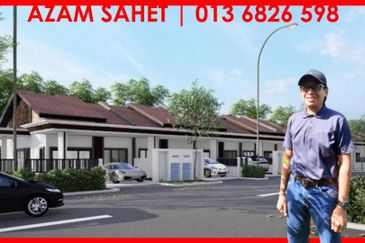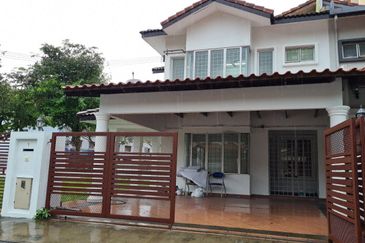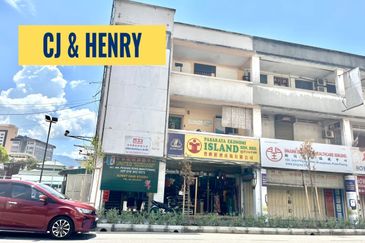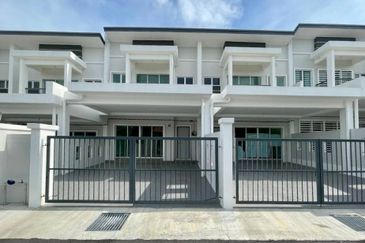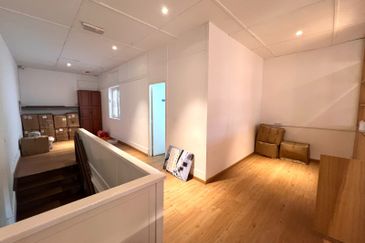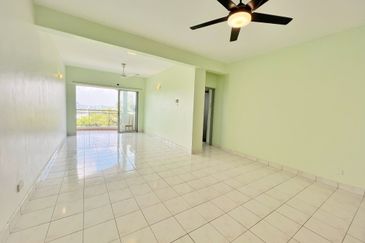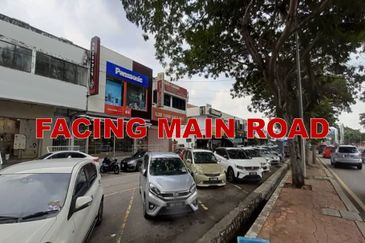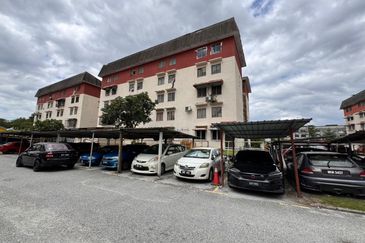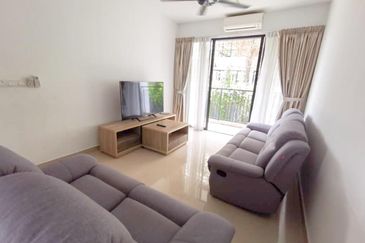Aiming for billion-ringgit profits
Datuk Abdul Wahab Maskan is back at the helm of Sime Darby Property Bhd (SDP) — the property arm of conglomerate Sime Darby Bhd — but the managing director says he never left.
He took over from Datuk Tunku Putra Badlishah Tunku Annuar two months ago after the latter decided not to have his contract renewed.
“I have never really been away,” Abdul Wahab, who is also the COO of Sime Darby, tells City & Country. “I was always involved in SDP, if not physically, then in my heart, head and spirit. I was always here.”
SDP is the result of the integration of the property arms of Golden Hope Plantations Bhd, Kumpulan Guthrie Bhd and Sime Darby in 2007 and the inclusion of Negara Properties (M) Bhd in early 2008.
Abdul Wahab was appointed managing director of SDP while Tunku Badlishah was made its executive vice-president of property development and strategic investments.
“We built a strong platform for the new property development entity right from the beginning. We set a few targets and came up with a transformation plan to ensure the successful integration of the three companies,” explains Abdul Wahab, who was group chief executive of Kumpulan Guthrie prior to the merger and group chief executive of Golden Hope Plantations before that.
He assumed the COO’s post at Sime Darby in June 2008.
“I started [SDP], then I moved out. Tunku Bad [Badlishah] took over and played a major role in drawing up strategic plans to ensure our objectives were met. Interesting new products were introduced that resulted in good sales. The outcome is that we achieved an average of half a billion ringgit a year in profit before interest and taxes.
“We have also strengthened our brand and came out tops in The Edge Top Property Developers Award 2009, apart from winning other awards,” remarks Abdul Wahab.
Over the past two years, SDP has also been busy building its property investment assets for recurring income. “For instance, through joint ventures via our subsidiary, we have five new corporate blocks [Oasis in Ara Damansara] plus other commercial blocks nearby. These are investment properties … they will lead us to our next strategy.”
In fact, SDP moved into one of the Oasis blocks (Block G) in June. The project was developed by Sime Darby Brunsfield Holding Sdn Bhd — a joint-venture company set up by SDP and Brunsfield Group. The almost 16-acre Oasis, with a GDV of RM978 million, comprises five office blocks (two 10 storeys and three 10½ storeys) with a combined built-up of almost 950,000 sq ft. The developer is keeping part of Oasis for recurring income and selling the rest for RM336 to RM410 psf.
The developer’s plan for a real estate investment trust — another move to diversify and strengthen its income base — is also on track.
“We must first build our asset base. Hopefully, something will happen this year (FY2012 ending June),” says Abdul Wahab, adding that the immediate asset value considered is around RM1.5 billion.
When asked, he does not deny nor confirm the possibility of the property division going for a listing in the future. “Why, did you hear something?” he enquires with a smile.
Next growth strategy
With Abdul Wahab behind the wheel again, SDP is poised to make great strides in the industry and move onto its next growth strategy. It plans to launch RM2 billion worth of properties from now until the end of FY2012.
“We have to plan a new set of strategies or objectives to take us to a higher level. We want bigger profits and our target is that by 2016, our property division is among the billion-ringgit achievers in terms of profit. We have the potential to do that as we have the resources, the assets, the brand, the balance sheet and the capability,” he points out. Property development will remain the core (80%) activity, supported by property investment/management.
“The bulk of projects will be in Malaysia and Singapore. We hope to strengthen our position overseas as well, especially in China as we believe it has huge business potential.”
The first phase of SDP’s project in Shandong, China, called The Damei Waterfront, spans 200 acres and is about 90% sold. It comprises 296 residential and 32 commercial units. SDP is moving onto the second phase now with “lessons learnt from the earlier phase”. The second phase will comprise 40 commercial and 278 residential units, and a kindergarten. SDP is also considering opportunities with other players in the republic.
The developer also has a presence in Singapore, Australia and the UK.
On the domestic front, it plans to grow organically by developing its landbank on its own and inorganically through creative partnerships, Abdul Wahab says.
He points out that JVs mean cost-savings and added-value for a project: “People have asked us before if we still believe in JVs. The main thing is that the value proposition must be fair to us. We believe in an open and flexible business proposition as long as it creates value for our shareholders within the context of a sustainable business model — a win-win situation and one which passes the test of fair play and governance.
“We can go ahead and develop the projects ourselves but if a JV partner adds value to them and maximises the value of the land, why not? We have our own plans but if there are strategic and catalystic propositions that could add value or speed up the development for faster turnaround, then it is our duty to our shareholders to not turn them down.
“But it will not be easy for them [JV partners]. They will have to convince us because we already have good plans.”
Currently, the developer is involved in JVs with Brunsfield and Sunrise Bhd.
In fact, SDP may be announcing two new JVs soon “barring unforeseen circumstances”. The two, one in Kuala Lumpur and the other in Petaling Jaya, are commercial projects.
They will feature retail, commercial and residential components. “They will most probably be high-density office and residential units. The tract in Petaling Jaya is about 10 acres while the east KL tract is 8 to 10 acres. We’re looking at a mix of affordable [RM400,000 and below] and higher-end products, featuring retail units and SoHos as they seem to be attractive to homebuyers,” Abdul Wahab comments.
SDP’s landbank stands at 17,000 acres, out of which 7,500 acres are ready for development. “Ready for development means there is a master plan and it could be at different stages of development.”
Master plans are being prepared for developments on another 6,000 acres.
As it enters an aggressive mode, SDP recognises the need to “train its people well and retain the right talent”. It is hiring to add to its current team of about 1,500.
“We want to internationalise our team in the way we do things as well as our products. It is one of the strategies and challenges we are facing. This can only be done by recruiting and investing more in people,” Abdul Wahab remarks.
New launches
SDP aims to launch projects worth RM2 billion from now until FY2012, which, according to Abdul Wahab, is slightly higher than the targets the developer usually sets.
 In May this year, it launched The Glades in Putra Heights, Subang. The developer redesigned the latest phase of the township, which offers mainly terraced houses, and managed to increase its GDV to RM1 billion. The Glades comprises 48 cluster villas, 80 bungalows, 78 cluster homes, 56 courtyard villas and 194 condos. A total of 23 bungalows, 25 courtyard homes and 30 cluster homes have been released for sale.
In May this year, it launched The Glades in Putra Heights, Subang. The developer redesigned the latest phase of the township, which offers mainly terraced houses, and managed to increase its GDV to RM1 billion. The Glades comprises 48 cluster villas, 80 bungalows, 78 cluster homes, 56 courtyard villas and 194 condos. A total of 23 bungalows, 25 courtyard homes and 30 cluster homes have been released for sale.
The bungalows, with built-ups of 6,534 to 7,427 sq ft, private swimming pool, open rooftop terrace, lift and en suite bathrooms, are priced from RM3.8 million. The cluster villas (built-ups from 4,930 sq ft) come with a dip pool on the rooftop, private garden and attic and are priced from RM2.9 million. The courtyard villas are priced from RM2.1 million while the cluster homes are going for RM1.4 million onwards.
To be launched soon is the Avalon in USJ Heights, Subang. It will consist of 14 freehold bungalows with indicative prices of RM3.2 million onwards and built-ups of 5,030 to 7,645 sq ft.
In its freehold Denai Alam township in Shah Alam, SDP plans to launch the Maple Terrace in 3Q. The project’s 104 three-storey link homes with built-ups of 3,519 to 4,434 sq ft have an indicative price of RM1.02 million onwards. Among the features are rainwater harvesting systems and fully covered and secured garages with automatic fold-up roller shutters. The project will also have a single entry and exit point.
In 4Q, SDP is looking to launch 18 condos in a project called Senada in Ara Damansara. The freehold and low-density development offers 18 exclusive suites with individual pools and private lift lobbies. With built-ups of 5,748 to 5,838 sq ft and an indicative price of RM3.7 million onwards, the homes come with a dedicated garage with four parking bays.
Scheduled for launch in 1Q2012 is a serviced apartment project, called Quarza Residen, in Desa Melawati, Kuala Lumpur. “There are not many pieces of land left in that area. Ours is the only tract left along the highway, in front of Kolej Tunku Abdul Rahman,” Abdul Wahab points out.
 Quarza Residen comprises 480 apartments with built-ups of 653 to 1,241 sq ft. The freehold development will have Green Building Index (GBI) features such as rainwater harvesting systems, low E glass and cross-ventilation. With indicative prices of RM391,000 onwards, each unit offers views of the pool.
Quarza Residen comprises 480 apartments with built-ups of 653 to 1,241 sq ft. The freehold development will have Green Building Index (GBI) features such as rainwater harvesting systems, low E glass and cross-ventilation. With indicative prices of RM391,000 onwards, each unit offers views of the pool.
When asked about the Sime Darby Vision Valley (SDVV) — which stretches from Ampar Tenang in Selangor to Port Dickson in Negeri Sembilan — Abdul Wahab says the planning for some of the projects in the corridor has been approved while others are awaiting approval.
The SDVV was identified as a strategic project under the 10th Malaysia Plan (10MP). “The master plan of the northern part of the SDVV, known as Selangor Vision City and which includes Bukit Jelutong, Denai Alam and Sri Subang, is ready with various themed developments, such as science-based centres. For the southern part, known as Vision Valley Malaysia, the first level of plans, land matters and infrastructure have been sorted out,” explains Abdul Wahab.
“The question now is, when to build what first? We are looking at what we can do ourselves without the participation of others and also evaluating proposals from local and international companies. We are very selective as some of the proposals may be attractive but do not give us the value we are looking for or meet our philosophy.”
Affordable housing
SDP is one of the developers involved in the government’s newly launched affordable housing scheme for first-time homebuyers. Abdul Wahab says SDP’s first affordable housing scheme under the 1Malaysia Housing Programme or Program Perumahan 1Malaysia (PR1MA) will be in east Seremban, Negeri Sembilan. It will be in a new 550-acre township called Bandar Ainsdale, the construction of which will start in FY2012.
“The freehold township is close to a new highway interchange to Seremban and has an estimated GDV of RM1.5 billion,” Abdul Wahab says.
Around 2,200 landed and strata homes will be built on the land which still houses an oil palm estate.
“We are looking at low-rise strata and mixed-use developments within a sustainable township with innovative social engineering features. The units will be very affordable,” Abdul Wahab explains.
It is worth noting that Bandar Ainsdale is situated next to the SDVV.
The developer’s first PR1MA project will be the 74-acre PR1MA 1, offering 1,000 homes, whereas PR1MA 2 on an 80-acre site will offer 1,200. PR1MA 1 is targeted for launch at the end of this month.
Other PR1MA schemes will be launched by SDP in Putra Heights and Elmina East, Shah Alam. Those planned on tracts involving other landowners may take some time due to the planning and approval process.
PR1MA, which was launched on July 4, aims to make home ownership affordable to middle-income Malaysians. Under the scheme, homes priced from RM150,000 to RM300,000 will be developed in urban and suburban areas across the country, beginning with the Klang Valley where demand for middle-cost homes is high.
Abdul Wahab remains optimistic about the local real estate market despite concerns about slower global economic growth and its spillover effect on the local economy. “Based on our experience, the market is good, with a sales rate of about 70% within two to three months. We are still positive but we have to be selective, so we are cautiously optimistic.
“As a property developer, we rely on the strength of the development and demand. Right now, affordable housing is a hot item. Premium housing will always be there, but it will depend on the location and the product. We will continue to focus on both affordable and high-end properties.”
Therein lies SDP’s strength — its ability to deliver different types of products for different groups.
This article appeared in City & Country, the property pullout of The Edge Malaysia, Issue 874, Sep 5-11, 2011
TOP PICKS BY EDGEPROP
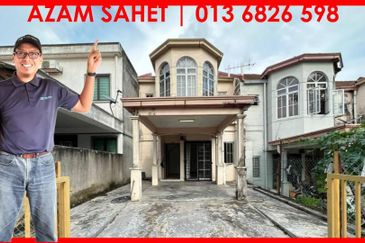
Bandar Puncak Alam
Bandar Puncak Alam, Selangor
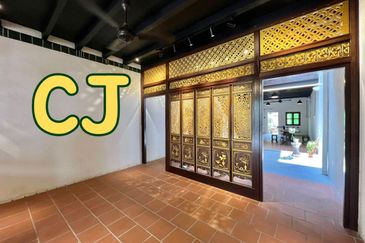
Georgetown UNESCO World Heritage Core Zone
Georgetown, Penang
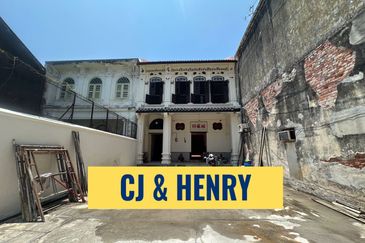
Georgetown UNESCO World Heritage Core Zone
Georgetown, Penang
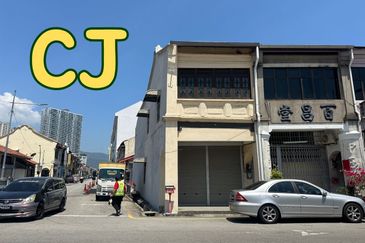
Georgetown UNESCO World Heritage Core Zone
Georgetown, Penang
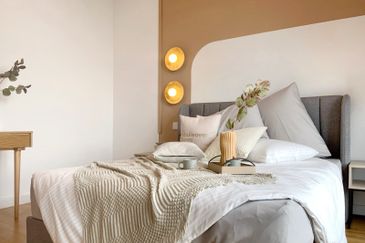
One Cochrane Residences
Kampung Pandan, Kuala Lumpur
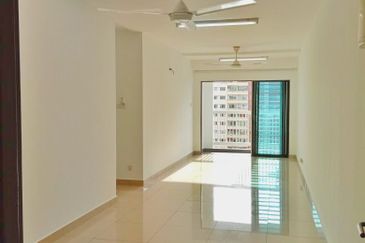
Alam Sanjung Serviced Apartment
Shah Alam, Selangor

Laman Anggerik, Nilai Impian
Nilai, Negeri Sembilan

